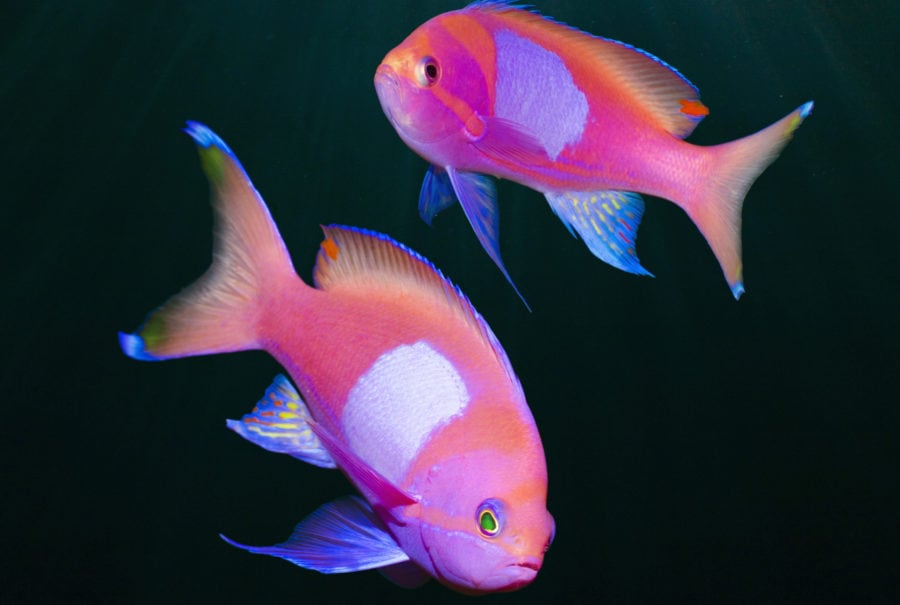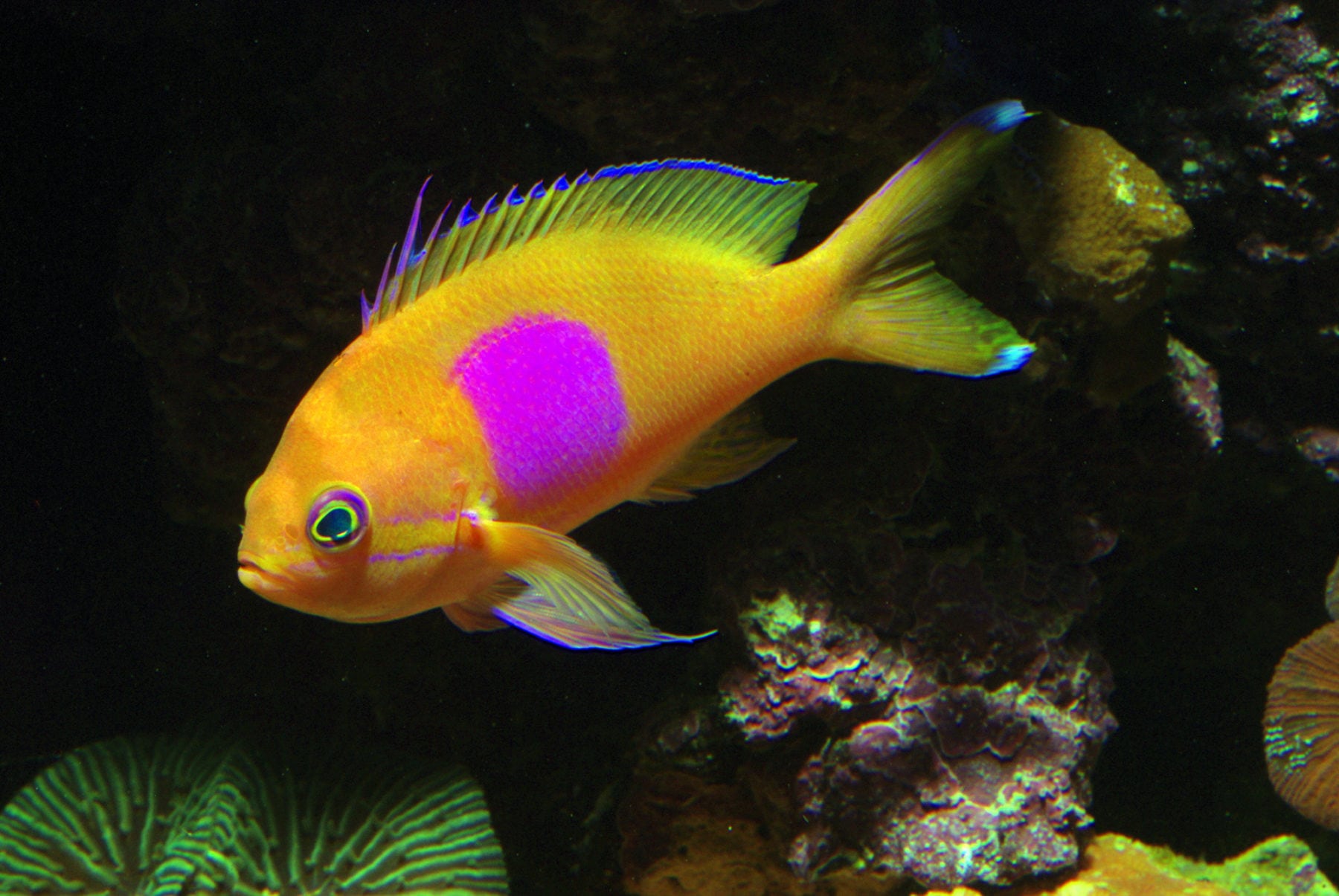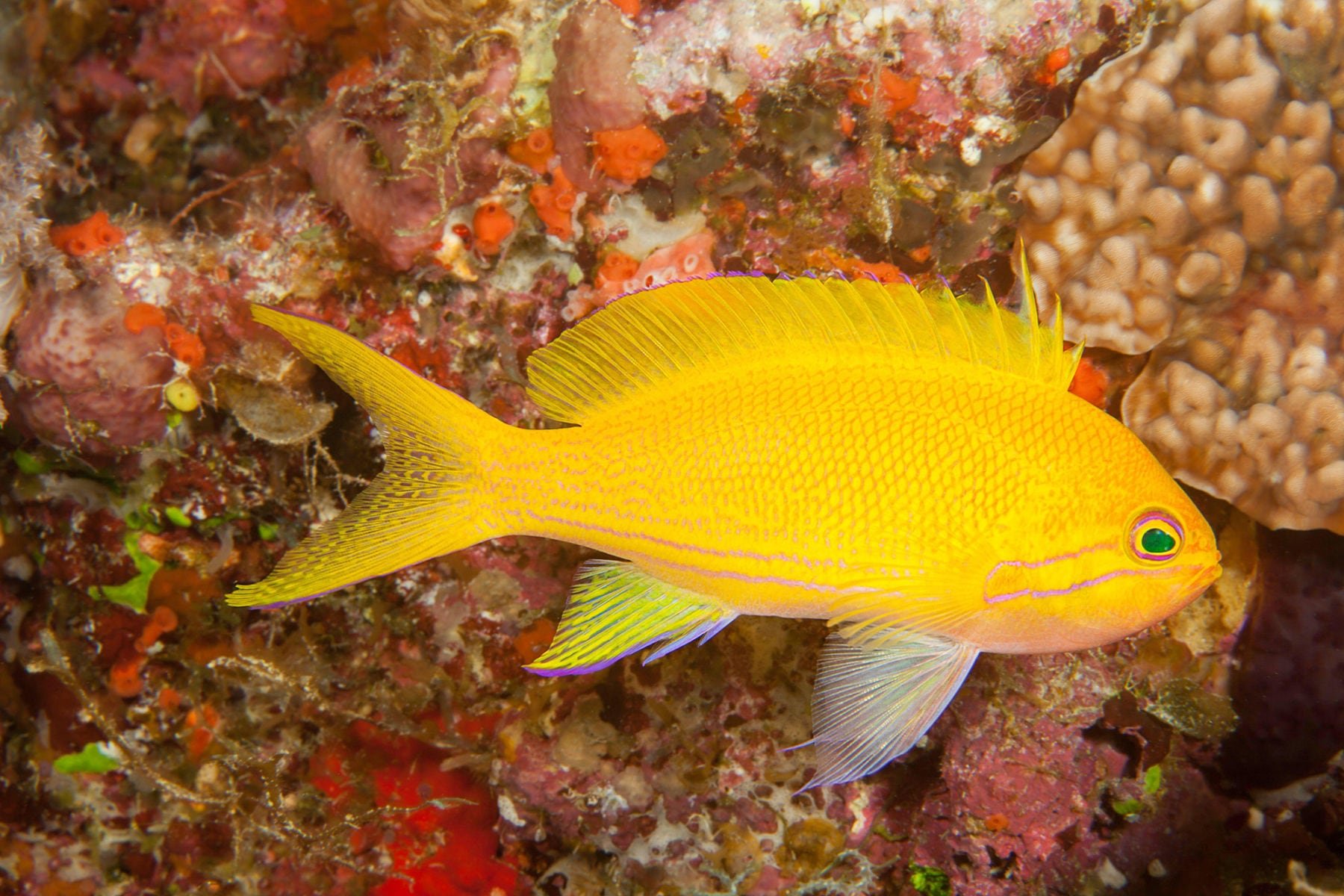The squarespot anthias is the ocean’s pocket mirror

Bec Crew
Bec Crew

When Poseidon gets a poppy seed stuck between his teeth, you know which loyal subject he’s calling on.
Found in the tropical waters off the north-western coast of Western Australia and north-eastern coast of Queensland, the squarespot anthias (Pseudanthias pleurotaenia) is also found throughout Southeast Asia.
Those gorgeous magenta, orange, and purple colours are displayed only by the males. While this colour combination appears to be the most common in the wild, the males can also come in red and yellow variations, each with the signature mirror square.
Here’s a yellow male, with a bright pink mirror:

We say pink, but that’s just a trick of the light – in natural light, the squarespot anthias’ mirror actually looks bright blue.
Females and juveniles are much less striking, but are still beautiful in their own right. Bright yellow all over and with a subtle purple line pattern running around its eye and along its sides, the female form would be no help to anyone trying to reapply their lipstick at an underwater banquet.

What’s cool about these fish is they get to try out both colour variations. Squarespot anthias are what’s known as sequential hermaphrodites, which means they begin life as a female, and transition to a male due to certain environmental and social factors.
One such social factor is a dominant male in the community dying. Squarespot anthias tend to move in groups made up of many females, juveniles, and just a few males. These ‘social harems’ are usually led by the most brilliantly coloured male, who will only allow smaller and less dominant males to tag along.
These groups often act like gangs, cruising around the ocean looking for a challenge. When two groups encounter each other, the dominant males might fight to assert their position of power among their group.
Things get a bit weird when one of these dominant males dies. The largest and most dominant female will experience a hormone surge and transition into the male form to take his place. This former female will be replaced by the next-most dominant female, who will take the place of the new dominant male when he dies, and so on.
Hermaphrodism is not unusual in sea creatures, and there are many different ways it manifests. In sea butterflies, for example, they start out male and eventually become female. Ribbon eels also start out life as males and become females as they mature.
We’ll leave you with this footage of a squarespot anthias showing off its strange and beautiful mirror square:

